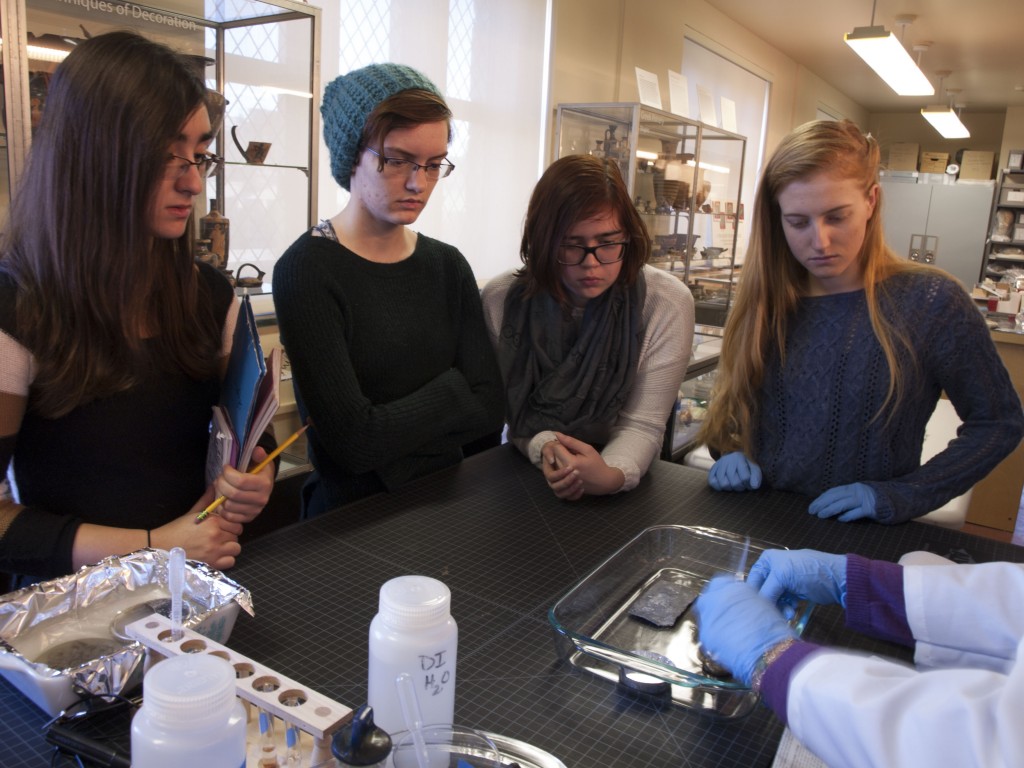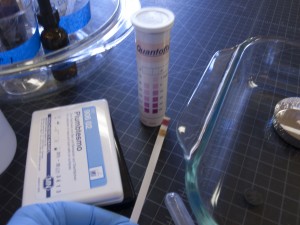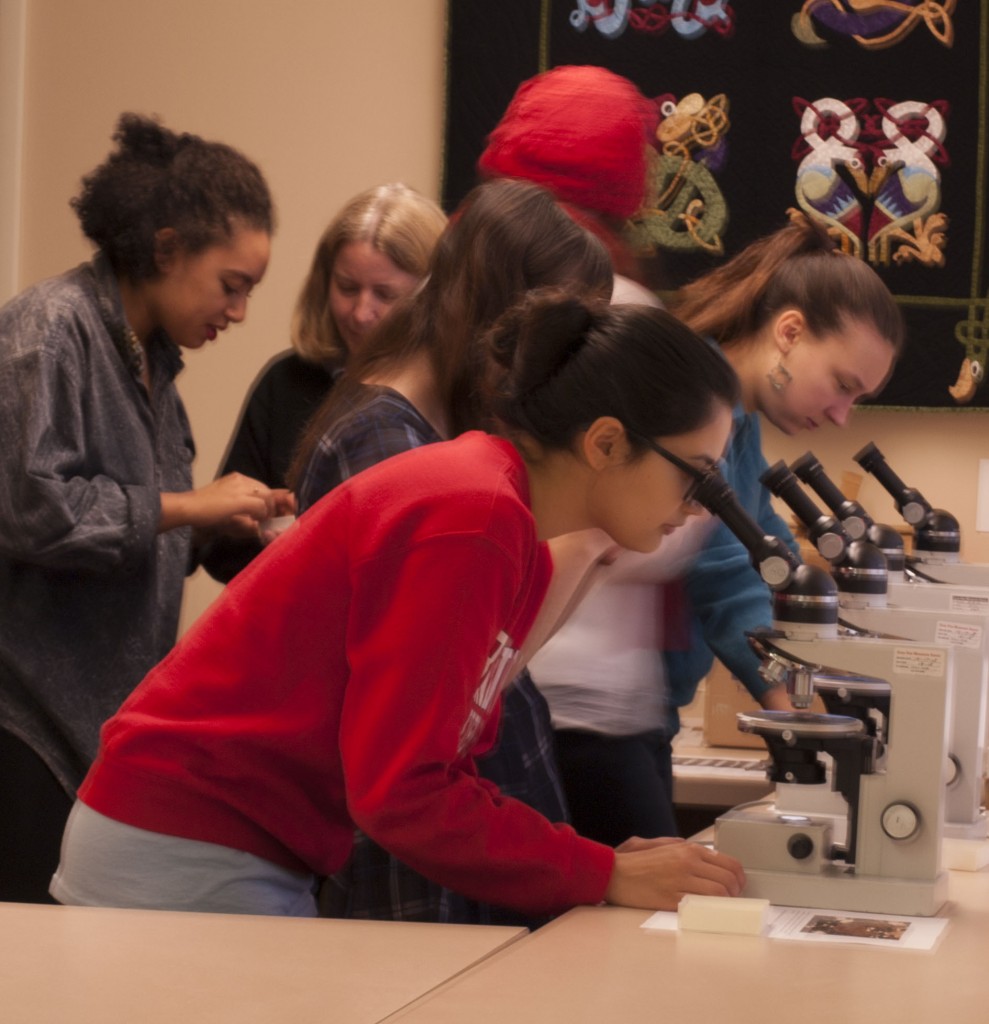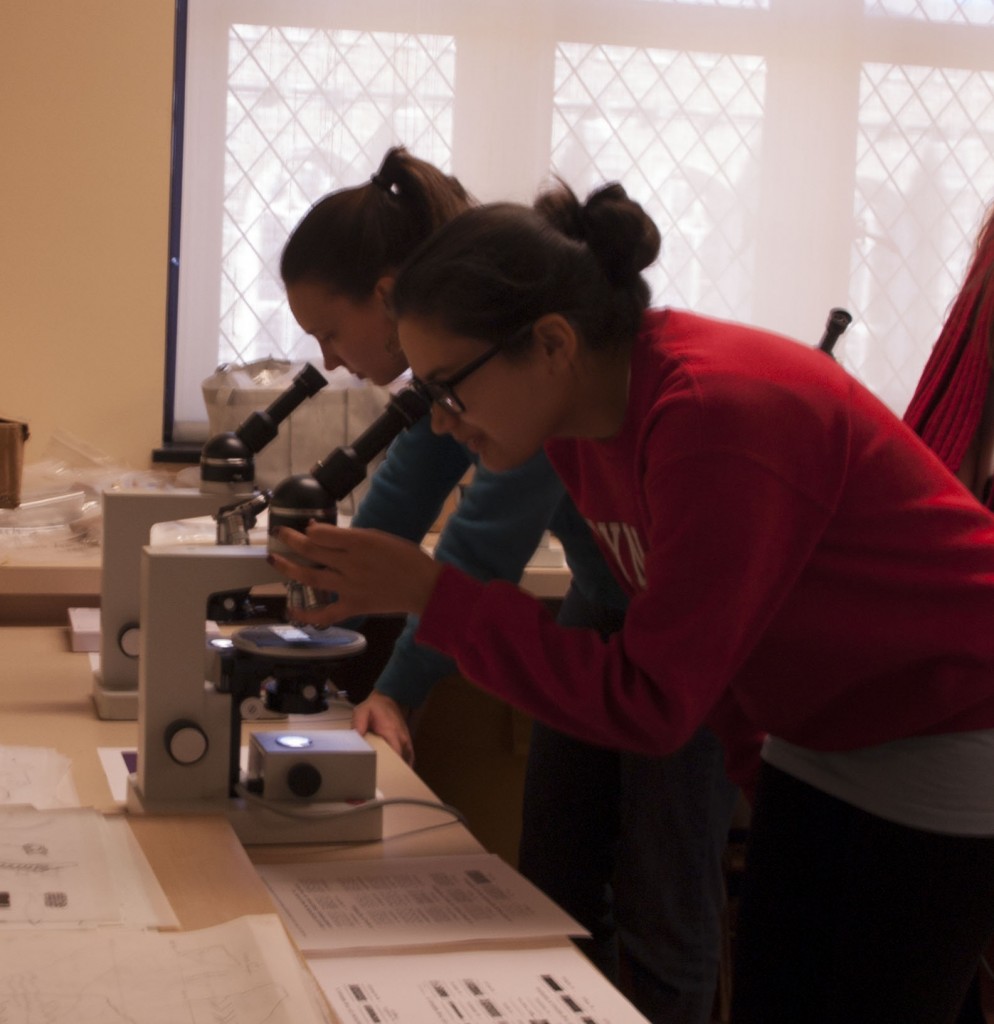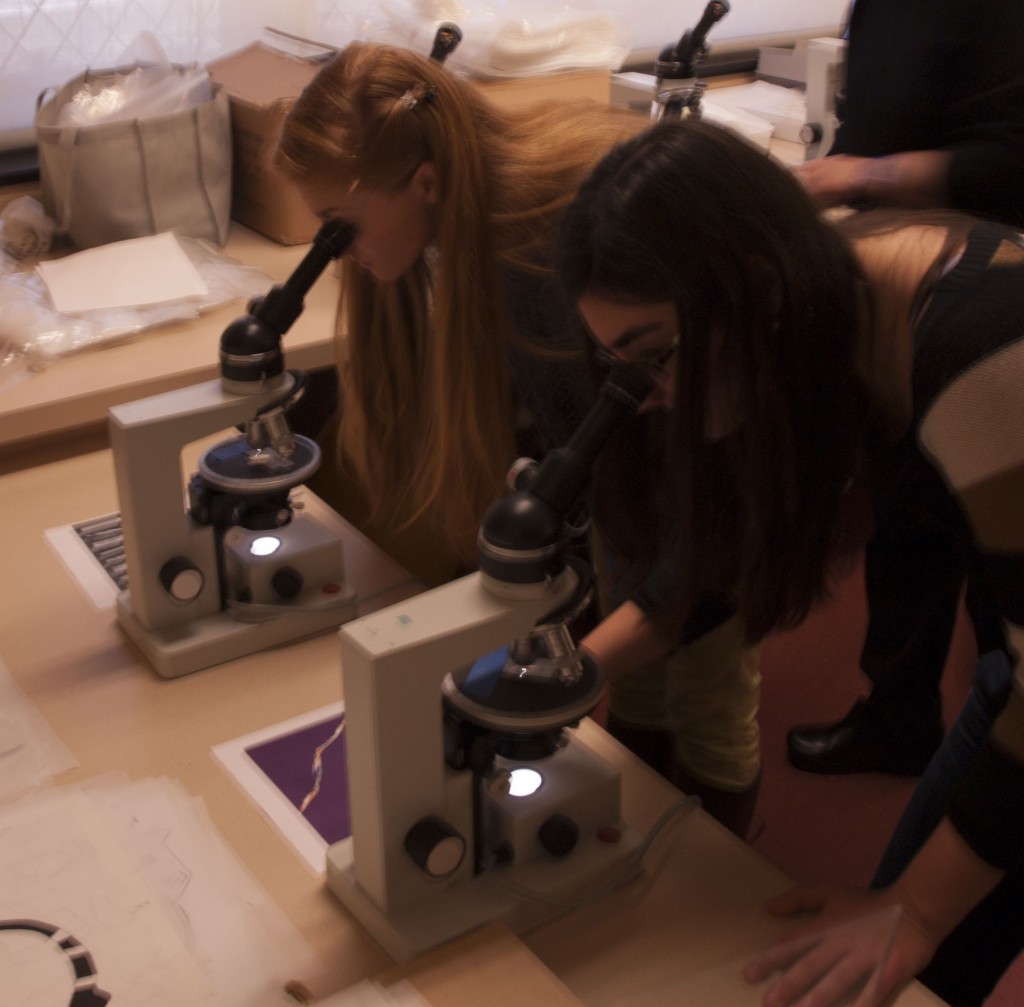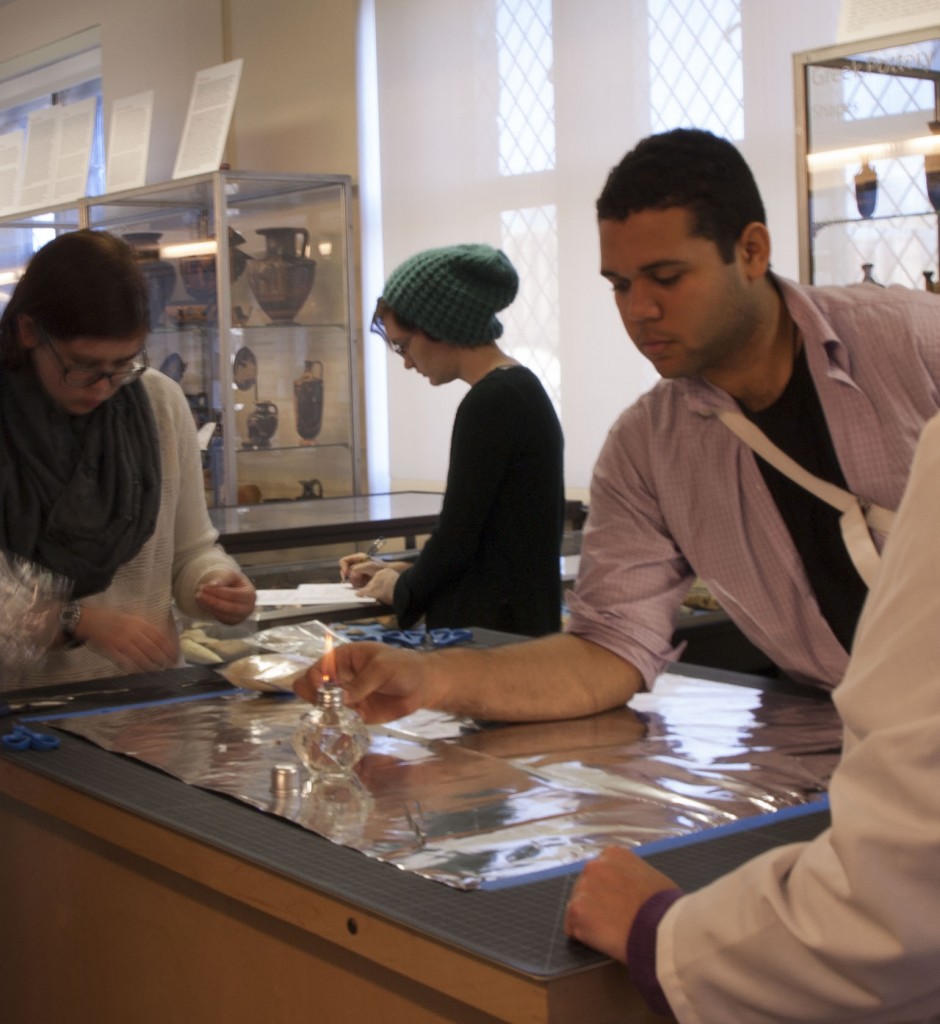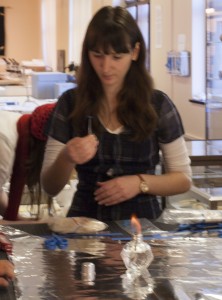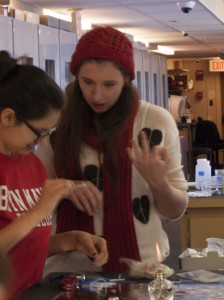For week 4, the class focused on different tests to identify materials.
First, Marianne demonstrated different spot tests and micro-chemical tests that can be applied to identify or to ascertain the presence of certain materials in or on an object. One test determined whether chlorides were present in pottery. Marianne combined silver nitrate, deionized water, and pulverized ceramic material in a test tube. Chloride was present, so silver chloride precipitated out.
Students then examined the makeup of different ceramics through a process known as petrographic analysis. A thin section is cut from the vessel and examined under a microscope. In this manner, the different minerals or vegetal material that the ceramic is made of are easier to identify.
Lastly, Marianne discussed the different ways of identifying fabric. Animal, plant, and synthetic fibers have different characteristics that can be identified through various examinations.
Not only do fibers appear visually different under a microscope, but when placed in an open flame burn in a variety of ways.

